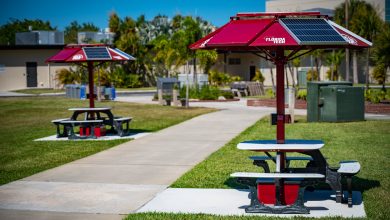Space Engineers: Exploring the Final Frontier on Mars
Last fall, in an article for CNN, President Obama gave space engineers and scientists a goal to send humans to Mars by the year 2030. The ultimate goal of the NASA space program is to be able to stay on Mars for an extended period of time. What do these plans mean for aerospace engineering? More jobs and more research, most likely.
Where We’re Going: Interim Steps
Reaching the point where humans could set foot on Mars will take lots of hard work and innovation. According to Obama, it will also take cooperation between private businesses and the government. Within two years, the President reports, private companies will send astronauts to the International Space Station.
Another important step in travel to Mars is developing technologies that can safely navigate outside of Earth’s orbit. NASA has sent robots like the Mars rover outside Earth’s orbit, and spacecraft have flown past every planet in our solar system. However, traveling that far with people is quite different and will require space engineers to research an application unlike what we have seen before.
Astronauts are staying on board the International Space Station for longer periods of time to research the long term effects of being in space, since it will take an estimated 6 to 9 months to reach Mars with current technology. Extended lunar flight will follow as a way to test gear that is currently in development.
Private Companies Have Their Own Plans
Private companies are already taking steps to develop the equipment and technology needed for a mission to, then an outpost on, Mars. Space engineers at Lockheed Martin has already developed a “Mars Base Camp” proposal with capsules for habitations and modular science labs so that scientists could live on Mars and study the planet in detail.
Another company, SpaceX, has goals to establish a million-person Mars colony within 50 to 100 years. CEO Elon Musk (who also runs Tesla) has plans for a 100-person spaceship to ferry passengers to and from Mars.
In order to reach these new heights in space travel and the ultimate goal of inhabiting another planet for an undetermined period of time, space engineers will need to research and innovate like they have never done before. This year, 100,000 engineers will graduate from American colleges and universities, and more top quality STEM educators are preparing to teach budding space engineers how to think and learn scientifically.
Both NASA, a government agency, and private companies working to develop aerospace technologies will be hiring new researchers, engineers, and others to develop and build the new technologies that will be needed to advance the goals of reaching Mars by the 2030s.
Buzz Aldrin Wants to #OccupyMars
Apollo 11 astronaut Buzz Aldrin and famous moonwalker is passionate about getting our butts to Mars. He has partnered with Florida Tech to establish the Buzz Aldrin Space Institute (BASI) and signed on as a research professor of aeronautics at Florida Tech. His goal: to promote the settlement of Mars through research.
The BASI will support commercial and international development of lunar resources to support an eventual Mars settlement. Aldrin’s concept is called Cycling Pathways to Occupy Mars. The plan involves staged missions using cycler spacecraft that would orbit back and forth between Mars and Earth. The craft would be somewhat similar to the International Space Station, allowing for docking and disembarking.
Aerospace engineering programs like the one at Florida Institute of Technology will be on the cutting edge of the work to get to Mars in the next few decades. Learn more about our aerospace engineering program to see what FIT can offer you in starting your aerospace career.
%CODE1AEROSPACEENGINEERING%






